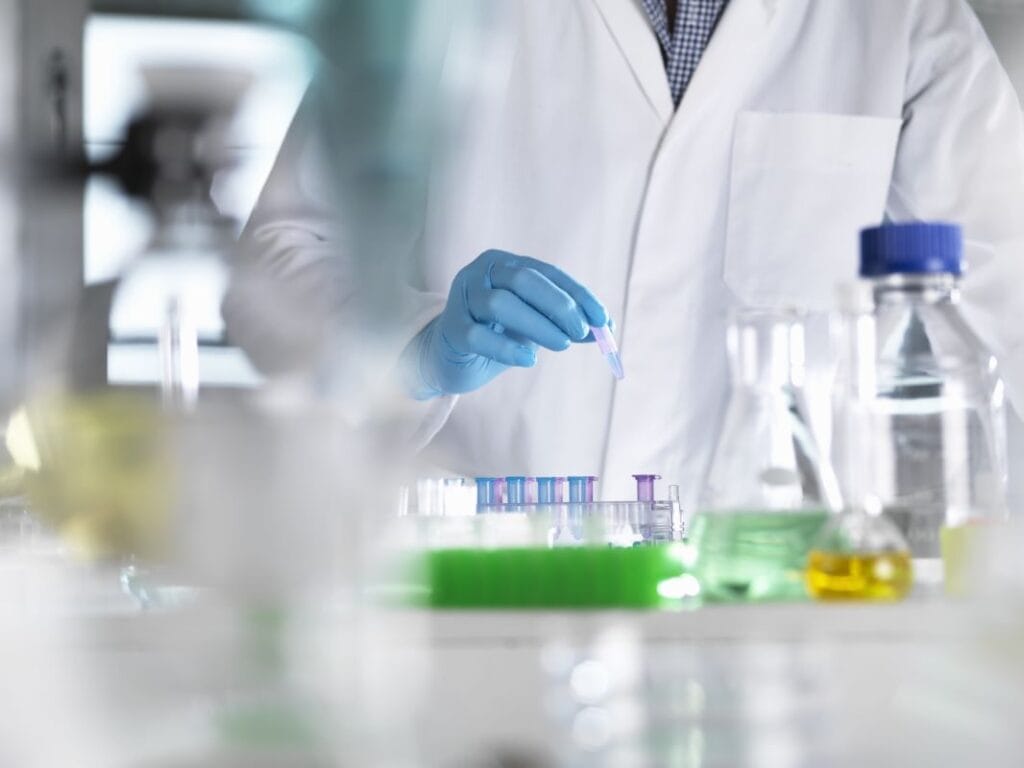Making multiple copies (millions or billions!) of a specific DNA region in a lab setting is a standard practice known as polymerase chain reaction (PCR). The experimenter’s chosen DNA region may be anything. For instance, a genetic marker used by forensic analysts to link suspect DNA to crime scene DNA or a gene could be the subject of the study.
PCR typically aims to generate a quantity of the target DNA region sufficient for analysis or other uses. For instance, DNA amplified by PCR may be used for sequencing, gel electrophoresis visualization, or cloning into a plasmid for additional investigations. Continue reading to learn more about PCR.

Taq polymerase
PCR needs a DNA polymerase enzyme, which creates new DNA strands using existing strands as templates, much like DNA replication in an organism. Taq polymerase is the name of the heat-tolerant bacterium from which it was derived that produces the DNA polymerase generally employed in PCR.
Since it is most active around, its DNA polymerase is exceptionally heat-stable and functional at 70°C. A DNA polymerase from humans or E. coli would not work at a temperature of 70°C. Taq polymerase is the best choice for PCR due to its thermal stability. High temperatures are frequently utilized in PCR to separate or denature the template DNA.
PCR primers
Like other DNA polymerases, Taq polymerase needs a PCR primer, a brief sequence of nucleotides that serves as the beginning point for DNA synthesis to produce DNA. In a PCR process, the researcher picks the region of DNA that the primers will copy or amplify.
Short single-stranded DNA fragments known as PCR primers typically have a length of 20–2020 nucleotides. Each PCR reaction employs two primers created to surround the target region (the area that needs to be replicated). In other words, they are given DNA sequences that will cause them to connect to the template DNA’s opposing strands just outside the region that has to be replicated. When the primers are attached to the template, the polymerase can lengthen them, which causes the area in between them to be copied.
The PCR process
Taq polymerase, primers, template DNA, and nucleotides (DNA building blocks) are the main components of a PCR reaction. A tube containing the components and the cofactors required by the enzyme is heated and cooled repeatedly to create DNA.
Basic actions include:
- 96°C denaturation: Strong process heating causes the DNA strands to split or get denatured. This gives a single-stranded template for the following step.
- Annealing (55–65°C): Cool the reaction for the primers to bind to the complementary sequences on the single-stranded template DNA.
- Extension (72°C): Raising the reaction temperatures will cause Taq polymerase to extend the primers, creating additional DNA strands. This cycle is repeated 25 to 35 times in a typical PCR reaction, which can take anywhere between 2-4 hours, based on the size of the DNA area being copied. The target region can increase from only one or a few copies to billions if the reaction functions effectively.
Conclusion
Molecular biology research, medical diagnostics, and even some subfields of ecology all use PCR in various domains of biology and medicine.

